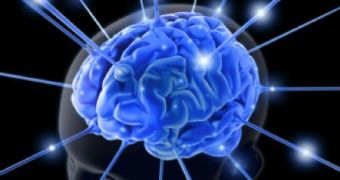A new study carried out by the Ecole Polytechnique Fédérale de Lausanne (EPFL) and the University of Lausanne (UNIL), in collaboration with Harvard Medical School, shows that the human brain evolves in a lifetime from a good network to a super advanced one.
The research compares the brain of a child to early Internet, when the connection was really bad and the hubs was poorly linked, and add that an adult's brain is more like today's fully integrated fiber optic network.
The main idea was that, as the topography of the brain does not change much in childhood, it must be all the nerve cells that connect several parts of the brain (the white matter) that evolve from very weak and inefficient, to extremely powerful connections.
Once the idea was set, the team had to test it, so they worked on mapping the brains of 30 children between 2 and 18 years, with a little help from colleagues at Harvard Medical School and Indiana University.
By using MRI, they watched how the water circulated within the brain and tracked the fibers that carry it, before Jean-Philippe Thiran, an EPFL professor and head of the Signal Processing Laboratory, and UNIL professor Patric Hagmann, of the Department of Radiology, created a database and charted the results.
They obtained a 3D model of every brain that showed the thousands of compounds linking different brain regions, and observed that the brain's inner network becomes more efficient as humans grow.
This is the first time that, without any invasive measures, a team of scientists verifies this theory thanks to a very advanced computer program.
This new software could help research concerning epilepsy and schizophrenia, because it allows the creation of individualized maps of the brain's connectivity.
Thiran explained that “the computer program brings together a series of processes in a 'pipeline' beginning with individual MRIs and ending with a personalized map of the fiber optics-like network in the brain.
“It takes a whole team of engineers, mathematicians, physicists, and medical doctors to come up with this type of neurobiological understanding.”
By using this model, doctors could gain insight on how a child's brain works, but also on the brain differences between left-handed and right-handed people.
Brain surgeons would also be better informed on where to cut in order to relieve epilepsy symptoms, and they would have the possibility to use this software for several other analysis.
Fortunately, Thiran and Hagmann wish to make the tool available early next year, for free, to hospitals around the world.
Watch the video presentation of the project:

 14 DAY TRIAL //
14 DAY TRIAL //